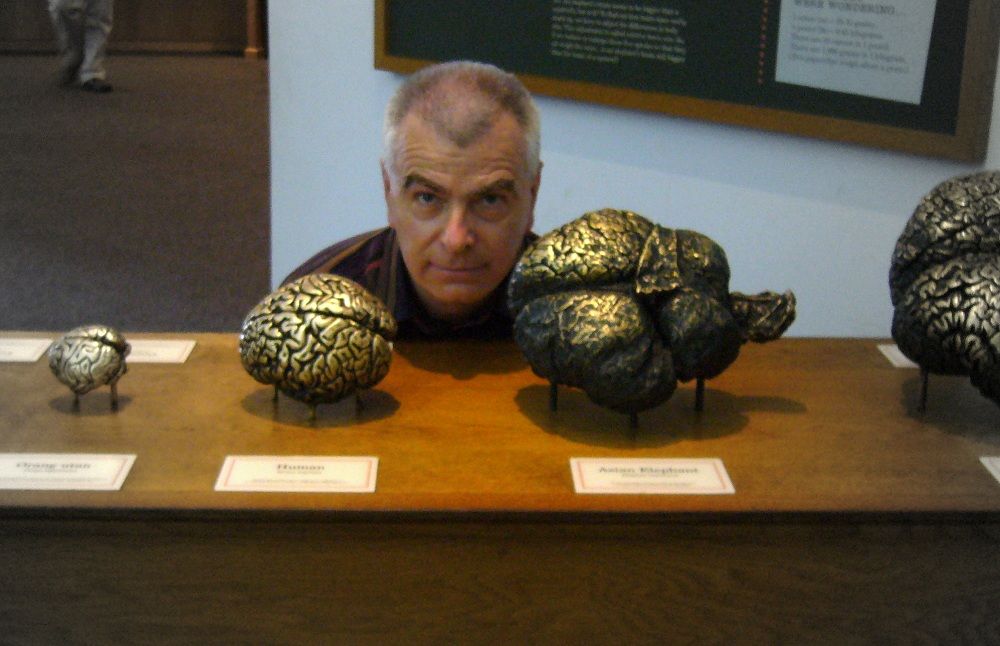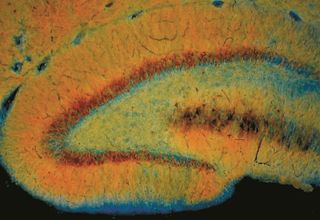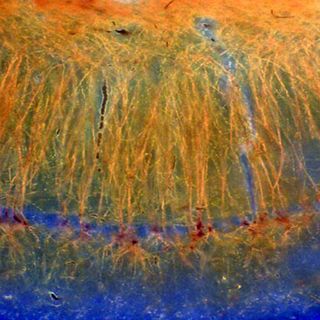Listening to the Brain

This ScienceLives article was provided to LiveScience in partnership with the National Science Foundation.
György Buzsáki's laboratory focuses on how neuronal circuitries of the brain support its cognitive capacities. Buzsáki received his M.D. and Ph.D. degrees in Hungary before moving to the United States. Currently he is a Board of Governors Professor of Neuroscience at Rutgers University in Newark, New Jersey. Buzsáki is co-recipient of the The Brain Prize in 2011.

Buzsáki's primary research interest is how brain cell circuits code, transfer and store information, especially how different brain oscillations (rhythmic or repetitive brain activity) serve such mechanisms. Over the past 35 years, Buzsáki has led the way in analyzing the functional properties of cortical neurons acting within their natural networks. He pioneered the experimental exploration of how coordinated, rhythmic neuronal activity serves physiological functions in the cerebral cortex (the outer layer of the brain), and in particular, how information is exchanged between the hippocampus, which creates long term memories, and the neocortex, which is involved in sensory perception. Using technically innovative, multi-site recording silicon probes in behaving animals, he identified the connections between cells changes during several brain patterns, especially their involvement in learning and memory. His two-stage (wake-sleep) model of memory is supported by research in numerous laboratories world-wide. Buzsáki brought these wide ranging issues together in his recent book "Rhythms of the Brain" (Oxford University Press, 2006), a masterful account of how cortical cells and circuits give rise to higher cognitive functions. Watch Buzsáki give a presentation on "Internally evolving cell assembly sequences in the service of cognition" at the Allen Institute for Brain Science 2010 Annual Symposium, an interview for "The Rightful Place" and an interview on "Conductors, Music and the Rhythms of the Brain," both on The Science Network (TSN). Check out his answers to the 10 ScienceLives questions, below.
Name: György Buzsáki Age: 61 Institution: Rutgers University Field of Study: Neuroscience
What inspired you to choose this field of study? Rhythmic phenomena in nature, feedback and interactions among various components of a system have always fascinated me since I built my first radio to wireless communication. For the past decades, I've also been fascinated with how complex phenomena such as cognition and action are generated in the brain by these principles. I was instantaneously hooked on neuroscience by the physiology lectures of Endre Grastyan, who would become my advisor in medical school.
What is the best piece of advice you ever received? Hm. Perhaps a brief statement from one of my professors: "The best hypothesis is always your hypothesis."
What was your first scientific experiment as a child? When I plugged the bare wires of a doorbell into the outlet (220V!), leaving our house without light for several hours. I still can relive the moments of seeing sparks all over and the frightening feeling of (almost) being electrocuted. That early experiment triggered me to learn about the importance of fuses, amperage and transformers, and left me wondering how electricity can have such a big impact on the body.
Sign up for the Live Science daily newsletter now
Get the world’s most fascinating discoveries delivered straight to your inbox.
What is your favorite thing about being a researcher? The freedom to explore anything; the vital essence of discovery (or basic) science is that one can walk on a road pursuing an idea, serendipitously find something unusual that does not fit and then pursue it to understand why it does not fit. Such sidetracks have lead generations of researchers to unexpected and totally novel territories.
The fundamental truth of this process and its efficacy are so difficult to explain to taxpayers and politicians, especially in today's push toward "translational science" initiatives, a slogan introduced by university bureaucrats in a quest for quick return of investment. It can easily be proven that when time and other (e.g., financial) resources are limited the "random walk" approach is superior or at least as efficient as any other pre-planned strategies in solving tough problems. This is what all animals do when in search for food or shelter in unknown territories. Evolution taught them that preconceived plans fail most of the time.
Another important factor in discovery and research is human motivation. People pursuing their own ideas work harder than when working on someone else's. If support and liberty for fundamental discoveries are taken away (as one can see such dangerous tendencies at both NSF and NIH) the long-term costs for the country will be very high.
What is the most important characteristic a researcher must demonstrate in order to be an effective researcher? Curiosity and persistence. Curiosity is one of our fundamental drives; we need to get answers to the unknown, otherwise we remain in constant fear. If thunder, eclipses, earthquakes, birth, sickness and death are explained by some means (e.g., by religious beliefs, trust in authorities, such as parents, or by science) we worry less. A small group of humans who have an unusually high dose of curiosity inevitably become scientists. To be useful for others, it is important to choose not only interesting, but also answerable problems.
What are the societal benefits of your research?

Our works revolves around the mechanisms responsible for processing, transferring and storing information in the brain. Although the work is "basic" it has multiple ramifications, including Alzheimer's disease, epilepsy, schizophrenia and virtually any cognitive or neurological diseases of the brain.
In addition, our work may provide clues on how to design more effective search engines that help us navigate in the new information age. An interesting species-specific feature of humans is the ever-increasing gap between the knowledge of the individual and the knowledge of the species (i.e., all humankind). A significant fraction of brain function got externalized during our cultural evolution. With the emergence of the internet, devices that allow us access to this enormous knowledge base have become part of our lives. If access to this large database could be made as efficient as we can recall our episodic memories in the brain, it would be a major revolution.
Who has had the most influence on your thinking as a researcher? My mentor Endre Grastyan. I have yet to meet another individual as smart and as well-educated as he was. His sincere and honest interest in neuroscience mesmerized me the first day I met him.
What about your field or being a researcher do you think would surprise people the most? Besides the challenge to make discoveries, neuroscience is a meeting place for people from all walks of life from genetics to math, from molecular biology to engineering. All of these different backgrounds bring a fresh look at the problems, novel methods for enquiry, different levels or rigor and multiple levels of explanation. If you have either an analytical mind or the ability to synthesize complex information, you can find challenging, yet attackable problems in neuroscience that can entertain you for good.
If you could only rescue one thing from your burning office or lab, what would it be? My lunch? And of course our dear rats and mice.
What music do you play most often in your lab or car? We listen to the "music" of the brain all the time in the lab. My favorite station is Jazz 88. I cannot help but listen to music the way I analyze large-scale brain activity, searching for the syntactical rules that allow separation of messages and long-term features to be predicted from short time scale interactions. The esthetic features of music emerge from its complexity — a halfway state between trivial predictability and random noise (i.e., pink noise) – just like the complex features of brain dynamics.
Editor's Note: This research was supported by the National Science Foundation (NSF), the federal agency charged with funding basic research and education across all fields of science and engineering. Any opinions, findings, and conclusions or recommendations expressed in this material are those of the author and do not necessarily reflect the views of the National Science Foundation. See the ScienceLives archive.













